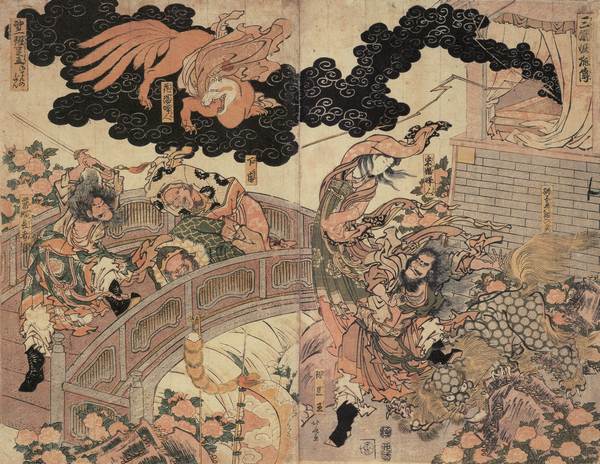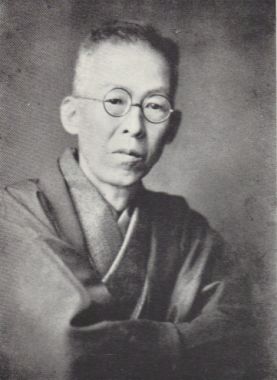|
Sesshō-seki
The , or "Killing Stone", is a stone in the volcanic mountains of Nasu, an area of Tochigi Prefecture, Japan, that is famous for sulphurous hot springs. In Japanese mythology, the stone is said to kill anyone who comes into contact with it. In Japan, rocks and large stones in areas where volcanic toxic gases are generated are often named ''Sessho-seki'' (殺生石), meaning Killing Stone, and the representative of such stones is this one associated with the legend of Tamamo-no-Mae and the nine-tailed fox.Sessho-seki. Kotobank. Legend The stone is believed to be the transformed corpse of , a beautiful woman who was expose ...[...More Info...] [...Related Items...] OR: [Wikipedia] [Google] [Baidu] |
Tamamo-no-Mae
Tamamo-no-Mae (, , also ) is a legendary figure in Japanese mythology. One of the stories explaining the legend comes from Muromachi period genre fiction called '' otogizōshi''. In the otogizōshi Tamamo-no-Mae was a courtesan under the Japanese Emperor Konoe (who reigned from 1142 through 1155). Legends Stories of Tamamo-no-Mae being a legendary fox spirit appear during the Muromachi period as otogizōshi (prose narratives), and were also mentioned by Toriyama Sekien in ''Konjaku Hyakki Shūi''. Edo period folklore then conflated the legend with similar foreign stories about fox spirits corrupting rulers, causing chaos in their territories. In the story told by Hokusai, formed in the Edo period, the nine-tailed fox first appeared in China and possessed Daji, a concubine of the Shang dynasty's last ruler King Zhou. She enchanted the king and brought on a reign of terror that led to a rebellion that ended the Shang dynasty. The fox spirit fled to Magadha of Tianzhu (ancient ... [...More Info...] [...Related Items...] OR: [Wikipedia] [Google] [Baidu] |
The Guardian
''The Guardian'' is a British daily newspaper. It was founded in 1821 as ''The Manchester Guardian'', and changed its name in 1959. Along with its sister papers ''The Observer'' and ''The Guardian Weekly'', ''The Guardian'' is part of the Guardian Media Group, owned by the Scott Trust. The trust was created in 1936 to "secure the financial and editorial independence of ''The Guardian'' in perpetuity and to safeguard the journalistic freedom and liberal values of ''The Guardian'' free from commercial or political interference". The trust was converted into a limited company in 2008, with a constitution written so as to maintain for ''The Guardian'' the same protections as were built into the structure of the Scott Trust by its creators. Profits are reinvested in journalism rather than distributed to owners or shareholders. It is considered a newspaper of record in the UK. The editor-in-chief Katharine Viner succeeded Alan Rusbridger in 2015. Since 2018, the paper's main news ... [...More Info...] [...Related Items...] OR: [Wikipedia] [Google] [Baidu] |
Noh Plays
is a major form of classical Japanese dance-drama that has been performed since the 14th century. Developed by Kan'ami and his son Zeami, it is the oldest major theatre art that is still regularly performed today. Although the terms Noh and '' nōgaku'' are sometimes used interchangeably, ''nōgaku'' encompasses both Noh and ''kyōgen''. Traditionally, a full ''nōgaku'' program included several Noh plays with comedic ''kyōgen'' plays in between; an abbreviated program of two Noh plays with one ''kyōgen'' piece has become common today. Optionally, the ritual performance ''Okina'' may be presented in the very beginning of ''nōgaku'' presentation. Noh is often based on tales from traditional literature with a supernatural being transformed into human form as a hero narrating a story. Noh integrates masks, costumes and various props in a dance-based performance, requiring highly trained actors and musicians. Emotions are primarily conveyed by stylized conventional gestures whi ... [...More Info...] [...Related Items...] OR: [Wikipedia] [Google] [Baidu] |
Mythological Objects
Myth is a folklore genre consisting of narratives that play a fundamental role in a society, such as foundational tales or origin myths. Since "myth" is widely used to imply that a story is not objectively true, the identification of a narrative as a myth can be highly controversial. Many adherents of religions view their own religions' stories as truth and so object to their characterization as myth, the way they see the stories of other religions. As such, some scholars label all religious narratives "myths" for practical reasons, such as to avoid depreciating any one tradition because cultures interpret each other differently relative to one another. Other scholars avoid using the term "myth" altogether and instead use different terms like "sacred history", "holy story", or simply "history" to avoid placing pejorative overtones on any sacred narrative. Myths are often endorsed by secular and religious authorities and are closely linked to religion or spirituality. Many soci ... [...More Info...] [...Related Items...] OR: [Wikipedia] [Google] [Baidu] |
Tsukioka Yoshitoshi
Tsukioka Yoshitoshi ( ja, 月岡 芳年; also named Taiso Yoshitoshi ; 30 April 1839 – 9 June 1892) was a Japanese printmaker. Nussbaum, Louis Frédéric. (2005)"Tsukoka Kōgyō"in ''Japan Encyclopedia,'' p. 1000. Yoshitoshi has widely been recognized as the last great master of the ukiyo-e genre of woodblock printing and painting. He is also regarded as one of the form's greatest innovators. His career spanned two eras – the last years of Edo period Japan, and the first years of modern Japan following the Meiji Restoration. Like many Japanese, Yoshitoshi was interested in new things from the rest of the world, but over time he became increasingly concerned with the loss of many aspects of traditional Japanese culture, among them traditional woodblock printing. By the end of his career, Yoshitoshi was in an almost single-handed struggle against time and technology. As he worked on in the old manner, Japan was adopting Western mass reproduction methods li ... [...More Info...] [...Related Items...] OR: [Wikipedia] [Google] [Baidu] |
Toriyama Sekien
200px, A Mikoshi-nyūdō, specifically a Miage-nyūdō, as portrayed by Toriyama">Miage-nyūdō.html" ;"title="Mikoshi-nyūdō, specifically a Miage-nyūdō">Mikoshi-nyūdō, specifically a Miage-nyūdō, as portrayed by Toriyama , real name Sano Toyofusa, was an 18th-century scholar, ''kyōka'' poet, and ''ukiyo-e'' artist of Japanese folklore. Born to a family of high-ranking servants to the Tokugawa shogunate, he was trained by Kanō school artists Kanō Gyokuen and Kanō Chikanobu, although he was never officially recognized as a Kanō school painter. Art career After retiring from service to the shogunate, he became a teacher to numerous apprentices in poetry and painting. He was among the first to apply Kanō techniques to ''ukiyo-e'' printmaking, inventing key new techniques along the way, such as ''fuki-bokashi'', which allowed for replicating color gradations. Most famously, he was the teacher of Kitagawa Utamaro and Utagawa Toyoharu. Sekien is best known for his mass-pro ... [...More Info...] [...Related Items...] OR: [Wikipedia] [Google] [Baidu] |
Kido Okamoto
was a Japanese author. His real name was . His best known work is the Shin Kabuki play Bancho Sarayashiki. Kido was born in the district of Shiba Takanawa, a neighbourhood in Minato Ward, Tōkyō Family Kido’s father, Okamoto Keinosuke (岡本佳之助) (later Kiyoshi - 清), was a samurai who, after the Meiji Restoration left the service of the Tokugawa Shōgunate and went to work for the British Legation as an interpreter. He was good friends with Ichikawa Danjūrō IX (九代目市川團十 - Kudaime Ichikawa Danjūrō), Konakamura Kiyonori (小中村清矩), Kawanobe Mitate (川辺御楯) anKurokawa Mayori (黒川真頼)who together formed the Antiquarian Society (Kyūko Kai - 求古会) to promote the modernisation of Kabuki based on the doctrine of the Theatre Reform Movement (Engeki Kairyō Kai - 演劇改良運動). He was also friends witMorita Kan’ya XII (十二代目守田勘弥)the owner-manager (zamoto -座元) of the Shintomiza Theatre, an employee of th ... [...More Info...] [...Related Items...] OR: [Wikipedia] [Google] [Baidu] |
Matsuo Bashō
born then was the most famous poet of the Edo period in Japan. During his lifetime, Bashō was recognized for his works in the collaborative '' haikai no renga'' form; today, after centuries of commentary, he is recognized as the greatest master of haiku (then called hokku). He is also well known for his travel essays beginning with '' Records of a Weather-Exposed Skeleton'' (1684), written after his journey west to Kyoto and Nara. Matsuo Bashō's poetry is internationally renowned, and, in Japan, many of his poems are reproduced on monuments and traditional sites. Although Bashō is famous in the West for his hokku, he himself believed his best work lay in leading and participating in renku. He is quoted as saying, "Many of my followers can write hokku as well as I can. Where I show who I really am is in linking haikai verses." Bashō was introduced to poetry at a young age, and after integrating himself into the intellectual scene of Edo (modern Tokyo) he quickly became we ... [...More Info...] [...Related Items...] OR: [Wikipedia] [Google] [Baidu] |
Oku No Hosomichi
''Oku no Hosomichi'' (, originally ), translated as ''The Narrow Road to the Deep North'' and ''The Narrow Road to the Interior'', is a major work of ''haibun'' by the Japanese poet Matsuo Bashō, considered one of the major texts of Japanese literature of the Edo period. The first edition was published posthumously in 1702. The text is written in the form of a prose and verse travel diary and was penned as Bashō made an epic and dangerous journey on foot through the Edo Japan of the late 17th century. While the poetic work became seminal of its own account, the poet's travels in the text have since inspired many people to follow in his footsteps and trace his journey for themselves. In one of its most memorable passages, Bashō suggests that "every day is a journey, and the journey itself home". The text was also influenced by the works of Du Fu, who was highly revered by Bashō. Of ''Oku no Hosomichi'', Kenji Miyazawa once suggested, "It was as if the very soul of Japan h ... [...More Info...] [...Related Items...] OR: [Wikipedia] [Google] [Baidu] |







